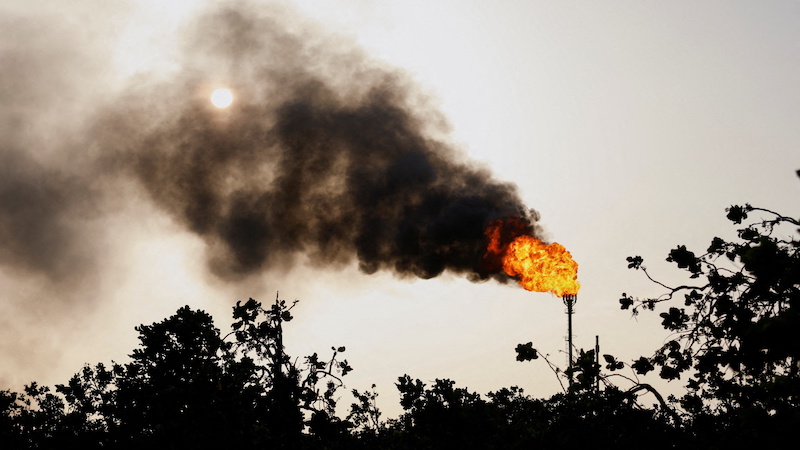New regulations and monitoring advances could turn the tide on methane emissions from oil, gas and coal production this year
Energy analysts have been singing the same tune ad nauseam: cutting climate-harming methane emissions from fossil fuels is one of the simplest and cheapest ways to slow the rate of global warming fast.
But oil, gas and coal producers are still closing their ears. In 2023, they continued spewing near record-high amounts of methane into the atmosphere, according to the latest assessment by the International Energy Agency (IEA) released on Wednesday. That is despite a raft of promises to stop doing so.
Now, however, analysts believe the tide may finally be turning. The introduction of stronger regulations in key fossil fuel-producing and consuming countries, coupled with better monitoring and transparency of harmful leaks, gives them cause for optimism.
“While emissions are still very high, 2024 is going to be a watershed moment on action and transparency on methane,” said Christophe McGlade, head of the IEA’s energy supply unit.
Methane role in 1.5C goal
Methane is a major contributor to global warming. Although it remains in the atmosphere for a much shorter time than carbon dioxide, it is 84 times more potent over a 20-year time horizon.
The energy sector represents the second-largest source of methane emissions linked to human activity, after agriculture, and has the biggest potential for reduction, according to analysts.
“If we can’t make real progress in cutting down methane, it is going to be impossible to limit warming to 1.5C,” said McGlade, referring to the most ambitious warming goal in the Paris Agreement.
The IEA estimates that the fossil fuel industry needs to reduce methane emissions 75% by 2030 for the world to reach net-zero greenhouse gas emissions in 2050.
But last year methane emissions from fossil fuels remained near a record high first reached in 2019, rising slightly from 2022 to 120 million tonnes, according to the watchdog. The United States and China are by far the largest emitters of the powerful gas from oil and gas operations and the coal sector respectively.
Leaks from old or poorly maintained infrastructure and the practice of flaring – burning of excess gas – at oil and gas wells are the main energy-sector culprits for putting methane in the atmosphere.
Easy-fix
Reining in those emissions does not require rocket science. The IEA says well-known technologies and measures, such as upgraded equipment and more efficient practices, can cut the bulk of methane generated from fossil fuels in a fast and cheap way.
Just less than half of last year’s emissions could have been avoided at no net cost to the producers, with measures paying for themselves thanks to revenues from the additional gas captured. “It was a massive missed opportunity,” McGlade said.
Fossil fuel firms seek UN carbon market cash for old gas plants
If this is such a win-win, it begs the question of why fossil fuel producers are not stepping up to the plate. Lack of awareness over the scale of emissions and longer return on investment from plugging leaks are cited in the report as extenuating circumstances.
For Mark Brownstein, methane expert at the Environmental Defense Fund, up until very recently methane had simply been ignored by the global community as a serious threat.
“Aggressive action on methane is long overdue, but we are unfortunately still at a relatively early stage,” he told Climate Home. “Only now we’re starting to see some coordinated action from companies and countries to address this pollutant.”
Raft of pledges
More than 150 countries have signed up to a commitment first announced at the Cop26 climate summit in Glasgow to reduce global methane emissions by at least 30% from 2020 levels by the end of this decade.
Last year’s Cop28 in Dubai produced a host of new promises. The Global Stocktake assessment of national climate plans called for countries to substantially cut methane emissions. Meanwhile, more than 50 oil and
Read More

